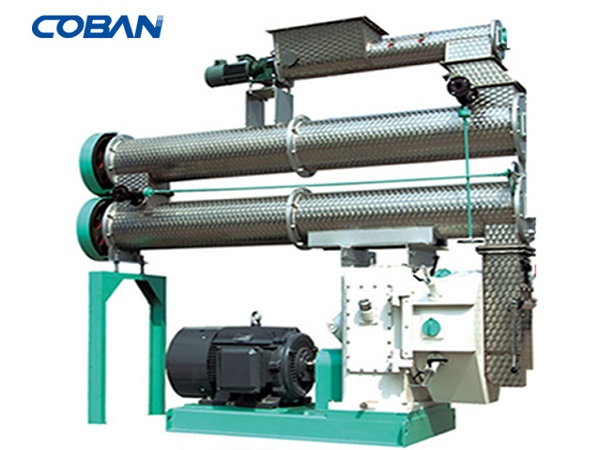Advantages of Poultry Feed Machine in Malaysia
Poultry feed machine offer numerous advantages that significantly enhance feed production processes. By improving feed quality, increasing production efficiency, enhancing nutrient utilization, and supporting sustainable practices, these machines play a vital role in modern poultry farming.
Advantages of Poultry Feed Machine: Enhancing Efficiency and Quality
In the rapidly evolving world of poultry farming, the efficiency of feed production is critical to achieving optimal growth and health of poultry. Poultry feed machine have emerged as essential tools in this regard, offering a range of advantages that significantly impact both the quality of feed and the overall productivity of farming operations. This article will delve into the key benefits of poultry feed machine, exploring how they enhance feed production and contribute to successful poultry farming.


Key Advantages of Poultry Feed Machine
Improved Feed Quality
One of the foremost advantages of poultry feed machine is their ability to improve the quality of feed. These machines ensure that ingredients are mixed thoroughly and evenly, which results in a more uniform and balanced feed. Consistent feed quality is crucial for meeting the nutritional needs of poultry, promoting better growth rates, and reducing the incidence of health issues.
Increased Production Efficiency
Poultry feed machine are designed to handle large volumes of feed efficiently. Automation in these machines reduces the need for manual labor, speeds up production processes, and minimizes human error. This efficiency translates into higher output rates and lower labor costs, making feed production more cost-effective and scalable.
Enhanced Nutrient Utilization
Advanced poultry feed machine often come equipped with precise dosing and mixing systems. These systems ensure that each nutrient is added in exact proportions, optimizing the nutritional value of the feed. Enhanced nutrient utilization improves the overall health and productivity of poultry, leading to better feed conversion ratios and reduced feed wastage.
Versatility in Feed Production
Modern poultry feed machine are highly versatile and can produce a variety of feed types, including mash, pellets, and crumbles. This versatility allows poultry farmers to tailor the feed to different stages of poultry development and specific dietary requirements. Whether it’s for broilers, layers, or other poultry, these machines can adjust to diverse feeding needs.
Consistency and Reliability
Consistency in feed production is critical for maintaining poultry health and performance. Poultry feed machine provide reliable and consistent results, ensuring that each batch of feed meets the same high standards. This reliability helps prevent fluctuations in feed quality that could affect poultry growth and overall farm productivity.
Reduced Waste
Poultry feed machine are designed to minimize feed waste through efficient processing and precise ingredient dosing. By reducing waste, these machines contribute to cost savings and support more sustainable farming practices. Efficient feed production also means fewer raw materials are needed, reducing the environmental impact of feed production.
Ease of Operation and Maintenance
Many modern poultry feed machine come with user-friendly interfaces and automated controls that simplify operation. Training requirements are minimal, and operators can quickly learn to use the machines effectively. Additionally, these machines are often designed for easy maintenance, with features that facilitate routine cleaning and servicing, ensuring long-term reliability.
Support for Sustainable Practices
As sustainability becomes increasingly important in agriculture, poultry feed machine are evolving to support eco-friendly practices. Many machines are designed to be energy-efficient and reduce environmental impact. By optimizing energy use and minimizing emissions, these machines help poultry farmers align with sustainability goals and regulatory requirements.


Choosing the Right Poultry Feed Machine
When selecting a poultry feed machine, several factors should be considered to ensure that the chosen equipment meets specific needs:
Production Capacity
Determine the scale of feed production required and choose a machine that can handle the desired volume efficiently.
Feed Type
Consider the types of feed to be produced and select a machine that can accommodate various feed forms, such as pellets or crumbles.
Technology and Features
Evaluate the machine’s technology, including automation, control systems, and mixing efficiency, to ensure it aligns with operational goals.
Brand Reputation and Support
Opt for machines from reputable brands known for their quality and reliability. Consider the level of technical support and after-sales service provided.
Budget
Balance the features and capabilities of the machine with your budget to achieve the best value for your investment.
Conclusion
Poultry feed machine offer numerous advantages that significantly enhance feed production processes. By improving feed quality, increasing production efficiency, enhancing nutrient utilization, and supporting sustainable practices, these machines play a vital role in modern poultry farming. Understanding these benefits helps poultry farmers make informed decisions, optimize their operations, and achieve better results in their farming endeavors.
As technology continues to advance, poultry feed machine will keep evolving to meet the changing needs of the industry. Embracing these advancements can lead to more efficient, productive, and sustainable poultry farming practices, ultimately contributing to the success and growth of the poultry industry.
- What should you pay attention to when purchasing feed production equipment?
- What are the advantages of large feed processing equipment?
- What are the advantages of pellet feed production line equipment?
- The impact of the particle size of the feed crusher on its quality
- Analysis of factors affecting work efficiency of feed production line
- Price and Safety of Pellet Feed Production Line
- Feed production line equipment prices and key factors in development
- The core role of feed production line and market price analysis
- Cattle feed production line procurement in Philippines
- Cattle Feed Production Line Manufacturer in Philippines







